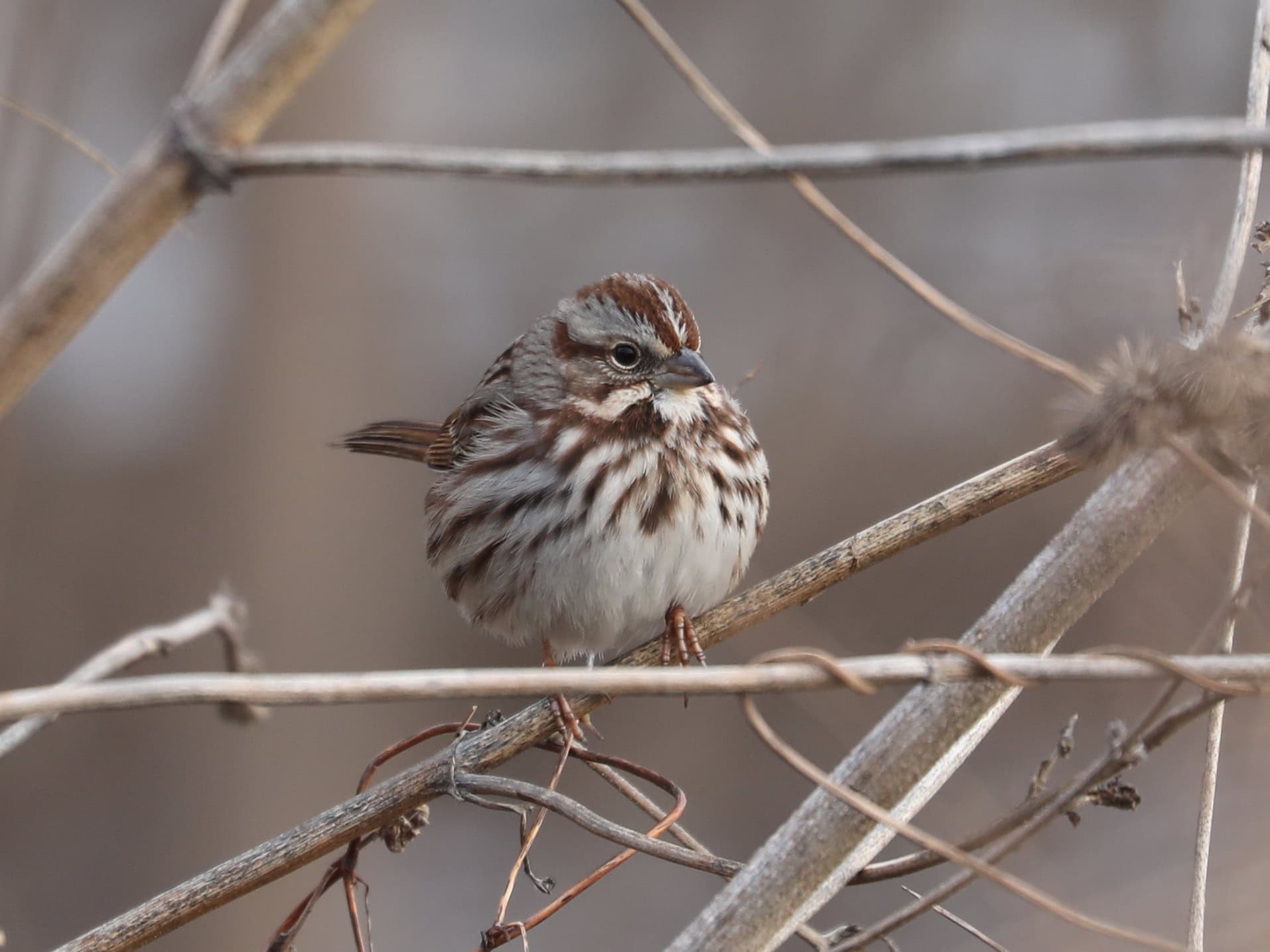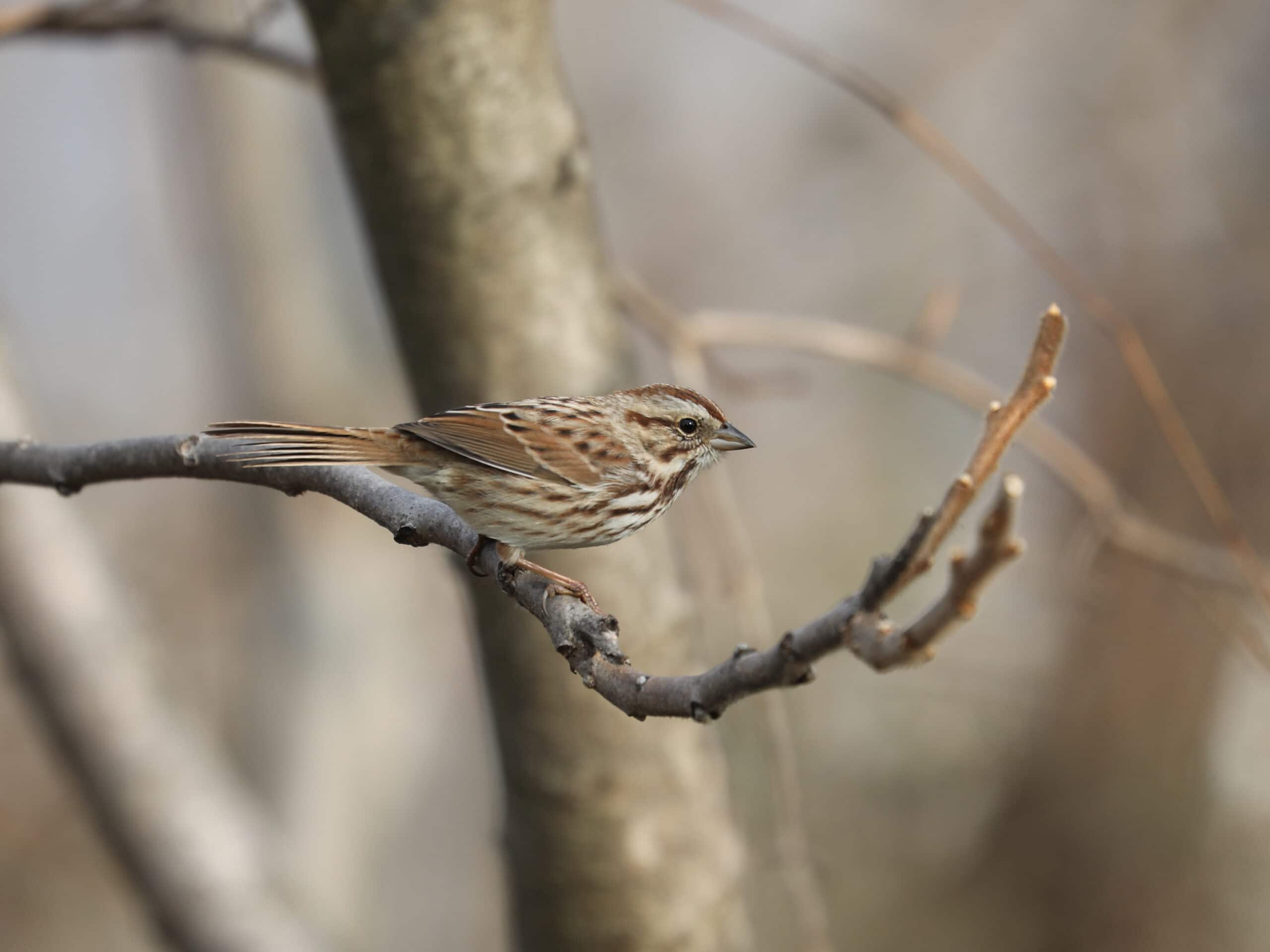Song Sparrows
Song Sparrows are one of the Susquehanna Valley’s most common, and most commonly overlooked, bird species. They also happen to be one of my favorites. It’s easy to dismiss them as “little brown birds,” but a closer look reveals a striking pattern of dark brown streaks on the breast, a white belly, and a striped pattern of dark brown and pale gray on the head. Song Sparrows are named for their beautiful song, recognizable by three emphatic introductory notes, and sometimes described as “Maids, maids maids, put on your tea kettle-ettle-ettle.”
The other abundant native sparrows in our yards are not with us year-round. Right now White-throated Sparrows and Dark-eyed Juncos are common, but they’ll fly north in April and May to breed elsewhere. The Chipping Sparrow is common here during the nesting season, but right now most are waiting out the winter far to the south. During all parts of the year, you can see more native sparrows at your feeders by offering their favorite food, White Proso Millet. You can spread millet directly on the ground, where sparrows like to forage, or choose a seed blend that contains millet (like our best seller, No-Mess LM). Most birds that regularly come to feeders prefer other seeds to millet, so they toss the millet to the ground where the sparrows will find it.
The invasive House Sparrow is abundant here all year, but despite its name it is in a different family of birds (sometimes called the Old World Sparrows). Unlike our native, or “New World” sparrows, House Sparrows are cavity nesters, competing with bluebirds, woodpeckers, and other native cavity nesters for nest sites in trees and nest boxes. House Sparrows are also more likely to visit your feeders in large flocks, and they’ll eat practically any type of bird food you provide.
Song Sparrows
Song Sparrows are one of the Susquehanna Valley’s most common, and most commonly overlooked, bird species. They also happen to be one of my favorites. It’s easy to dismiss them as “little brown birds,” but a closer look reveals a striking pattern of dark brown streaks on the breast, a white belly, and a striped pattern of dark brown and pale gray on the head. Song Sparrows are named for their beautiful song, recognizable by three emphatic introductory notes, and sometimes described as “Maids, maids maids, put on your tea kettle-ettle-ettle.”
The other abundant native sparrows in our yards are not with us year-round. Right now White-throated Sparrows and Dark-eyed Juncos are common, but they’ll fly north in April and May to breed elsewhere. The Chipping Sparrow is common here during the nesting season, but right now most are waiting out the winter far to the south. During all parts of the year, you can see more native sparrows at your feeders by offering their favorite food, White Proso Millet. You can spread millet directly on the ground, where sparrows like to forage, or choose a seed blend that contains millet (like our best seller, No-Mess LM). Most birds that regularly come to feeders prefer other seeds to millet, so they toss the millet to the ground where the sparrows will find it.
The invasive House Sparrow is abundant here all year, but despite its name it is in a different family of birds (sometimes called the Old World Sparrows). Unlike our native, or “New World” sparrows, House Sparrows are cavity nesters, competing with bluebirds, woodpeckers, and other native cavity nesters for nest sites in trees and nest boxes. House Sparrows are also more likely to visit your feeders in large flocks, and they’ll eat practically any type of bird food you provide.
About The Author
Dan Hinnebusch is the Ornithologist for Wild Birds Unlimited. Click to learn more.





